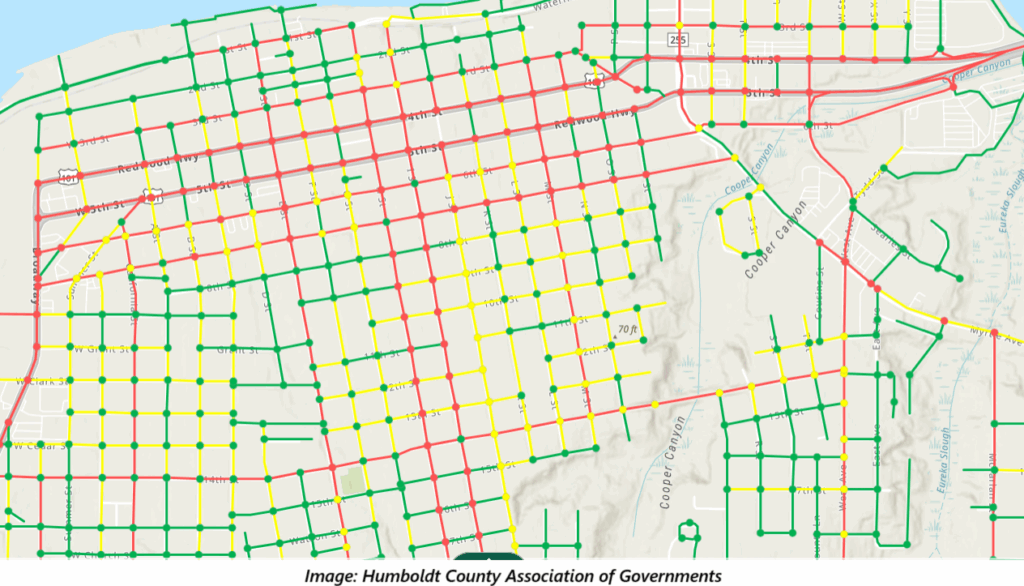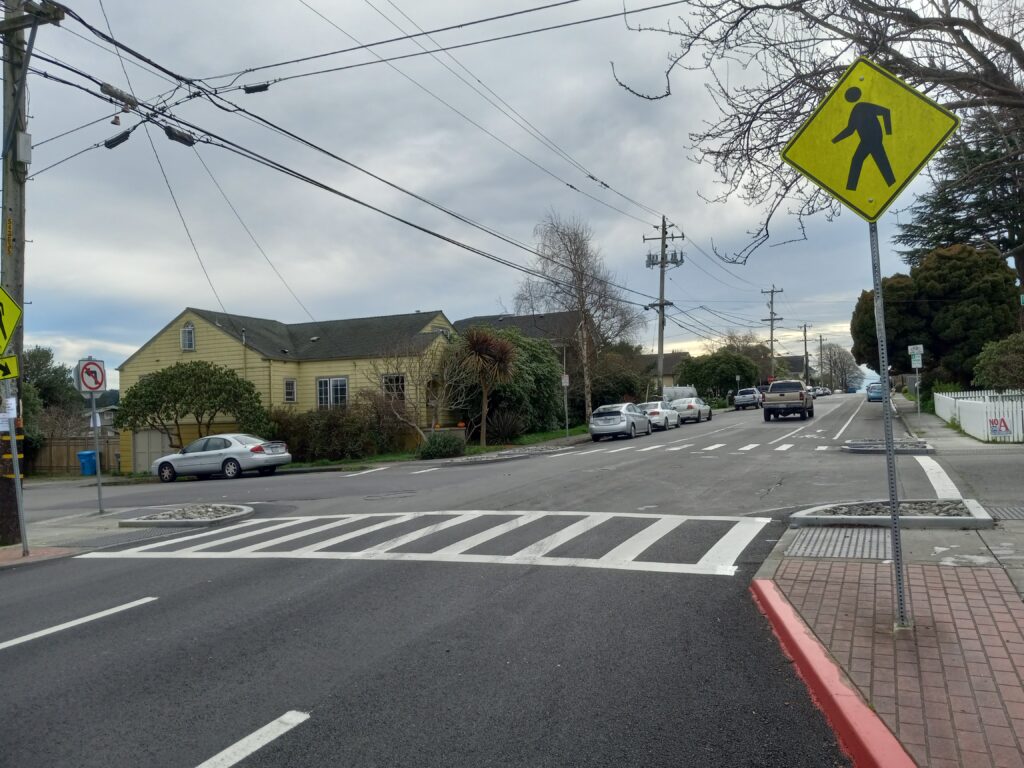The Collector
August 8, 2025
Bike & Pedestrian Traffic Stress in Humboldt
Different people have different tolerances for the kinds of places they will walk, bike, or roll. Generally, research shows that a relatively small number of people have a confident or fearless attitude and will bike or walk almost anywhere, but on busier streets most people require more comfortable infrastructure like good sidewalks and bike lanes. Researchers and planners quantify this idea as the level of traffic stress, or LTS, which is a score ranging from 1 to 4. LTS 1 represents conditions that almost everyone – including most kids – can tolerate. LTS 2 represents conditions that most adults will tolerate, while LTS 3 and 4 represent conditions that only smaller numbers of adults will tolerate.
Over the past year, CRTP has been working with the Humboldt County Association of Governments and engineering firm GHD to develop a local methodology for bike and pedestrian LTS, and to assess all of the street and road segments and crossings in the greater Humboldt Bay area (also known as Wigi). The results of that assessment are now publicly available here. We encourage everyone who walks, bikes or rolls in the area to check out the scores, and provide feedback on whether you think we got it right. You can email your comments to info@hcaog.net.
Before you review the LTS results, it’s important to understand the methodology. For example, the pedestrian LTS results show the vast majority of streets and roads in the area are “high stress,” meaning they scored LTS 3 or 4. The reason for the score depends on the exact location, but common reasons for a high pedestrian score are that a street that doesn’t have a sidewalk at least 4 feet wide or an intersection doesn’t have a curb ramp – criteria that are meant to reflect the experiences of people using wheelchairs, strollers, and other devices. Considering the experiences of everyone in the local population is key to getting the LTS scores right.
Mark Your Calendar for the Tri-County Independent Living Expo
Our friends at Tri-County Independent Living are hosting their 2025 Expo at Eureka’s Sequoia Conference Center on Friday, September 26. The Expo will focus on supporting the Independent Living of people with disabilities and those who are aging. CRTP will be there, and we hope you can come too!
Calling All Mural Artists!
The Hiller Road quick-build safety project in McKinleyville will include pavement art in the bike lane buffers and intersection areas – and you could be the artist! Fill out the application for artists by the end of August if you’re interested. If you’re not an artist but you’d like to help pay for the art, the project is also seeking sponsors.
Regional Paving Project Begins
The annual “slurry seal” paving project, which adds a layer on top of existing asphalt to improve the pavement condition of various streets and roads, has begun in the Humboldt Bay area. The project is a collaboration between Humboldt County and cities including Arcata, Eureka, and Fortuna. Because slurry sealing also requires re-painting, projects like this are a great opportunity for local governments to add bike lanes, update crosswalks, and make other low-cost changes to improve safety. In fact, Eureka and Arcata have adopted complete streets policies that call for doing just that, and CRTP advocates to ensure those improvements are made.
“Headline Humboldt” Cancelled
The cuts to public broadcasting funds enacted by the Trump administration and Republican Congressional majority are already hitting home, with KEET-TV forced to cancel its weekly Headline Humboldt news show. Headline Humboldt has featured the work of CRTP and many other local nonprofits over the years, helping get the word out about important local issues. The show will be deeply missed.
News from Beyond the North Coast
US Pedestrian Fatalities Down a Little Last Year
A new report shows that pedestrian deaths dropped by about 4 percent last year compared to the year before. This is welcome news, but not nearly enough progress. The small recent decreases have not reversed the trend of the last two decades, with pedestrian deaths still almost twice as high last year as they were twenty years ago.
A “Road Safety Emergency”
It’s not just pedestrians dying on US streets and highways. The US has an overall traffic death rate far higher than other wealthy nations, and is one of the few countries in the world where death rates have been increasing instead of decreasing in recent years. In recent testimony to Congress, the head of the Insurance Institute for Highway Safety called this situation an emergency and advocated for federal action to make roads and vehicles safer.
The Collector is CRTP’s weekly transportation news roundup, published every Friday. We focus on North Coast news, but we also include relevant state, national and international transportation news – plus other items that we just find kind of interesting! To submit items for consideration, email colin@transportationpriorities.org.


